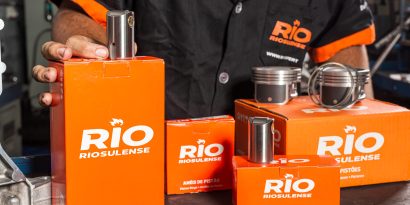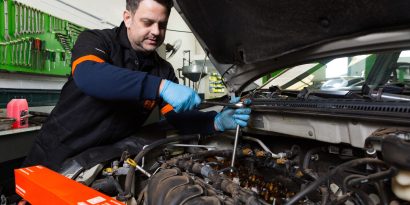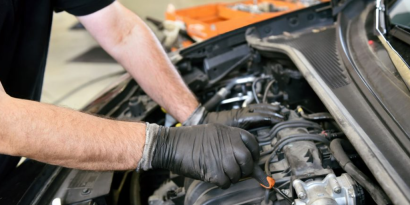In the day-to-day of automotive repair, it is no secret that the cylinder head is one of the sets that most demand professional attention and technique during application and maintenance. And among all the components that make up it, the valve seat is especially important to ensure the correct functioning—and proper sealing—of the system.
The function of this component is to ensure perfect closure near the valve to seal the combustion chamber. In practical terms, it is the part of the head that serves as a kind of “bed” for the base of the exhaust and intake valves, being responsible for ensuring a precise fit between the valve and the head, isolating the set.
Here, there is still a little more detailed explanation for those not so familiar with the particularities of the cylinder head. Look: these valves are largely responsible for allowing the passage of the air and fuel mixture into the cylinder — as well as the exit of the burnt gases in the exhaust.
When this process happens, the valve opens and closes and, when it is closed, it needs to be accommodated in such a way as to completely isolate the combustion system. This means that, at the time of engine compression and explosion, the mixture cannot escape. This is where the valve seat comes into play, ensuring a perfect match angle with the valve base, ensuring perfect seating and sealing the assembly.
RIO technology at the service of efficiency
Now that you know the role of the valve seat in the head, it’s even more important to understand the importance of ensuring that this component is manufactured, machined and applied with all the necessary care, isn’t it? In order for it to perform its function flawlessly, the valve seat production process must involve precision engineering, effective finishing techniques and, of course, special treatment during casting.
That’s why, here at RIO, this line also has raw and straight brocade seats with customized measurements, all to facilitate the recovery of heads. In addition, our production process also guarantees the casting of parts with alternative materials for special applications. All of this with the same quality of the original pieces linked to tradition and reference that are already registered trademarks here at RIO.
And of course, knowing the reality of the applicator and the automotive market, we plan our portfolio to ensure that all your needs are met, regardless of the model, make or year of the engine. Proof of this is that our seats are produced with variations in material and special alloys to supply even the most customized niches.
Here, the professional partner will find seats produced in cast iron and tempered cast iron, for example, for application in vehicles powered by gasoline and flex. And for those operating in diesel-based vehicles with low horsepower engines, our catalog features unique valve seat options made from tempered cast steel.
Oh, and we can’t stop talking about the seats produced with the superalloy, can’t we? Adaptable to all types of engines, this option brings an important differential: they can also be applied to high-performance diesel engines, providing more safety and performance for the machine and more tranquility for the Expert’s routine.
The valve seat and the secrets of head application
Investing in technology and in efficient and differentiated production processes when it comes to valve seats is a matter of responsibility. As you know, the opening and closing movement of the valve ends up impacting the back of the valve base and the seat.
This friction, in turn, can either cause complete breakage of second-line seats or accelerate the wear of adjacent components, such as the valve stem spring, the valve itself, and the valve guide—hence the importance of having a refined product, produced in accordance with international quality standards and with a guarantee of origin.
Otherwise, it is only a matter of time before irregularities in the seal between the seats and valves appear, causing premature wear with seat sinking. And know that this is a serious problem, capable of even deforming valve springs and causing an excessive increase in temperature in the combustion chamber, creating carbonization in the chamber region.
On the other hand, when using a seat with proven quality and recognized by the market, the repairman needs to be concerned only with the service technique, ensuring the correct adjustment and tightening when applying this component to the head. After all, he will be working with a replacement part of identical quality to the original, with extremely high levels of strength and durability.
It is to ensure this safety that our valve seat undergoes rigorous grinding, hardening, precision processing and finishing processes during its manufacture. So much so that we put in place a series of tests simulating common conditions in the recovery of a head to help you and your teams understand how this component behaves in conditions of contraction!
We hope this article has helped you to stay on top of the details and particularities of the seat at RIO, which is highlighted in the national and international market when it comes to quality, durability and reliability! Oh, and if you have any questions or want more information about our offices, leave your question here on the blog or contact us!





